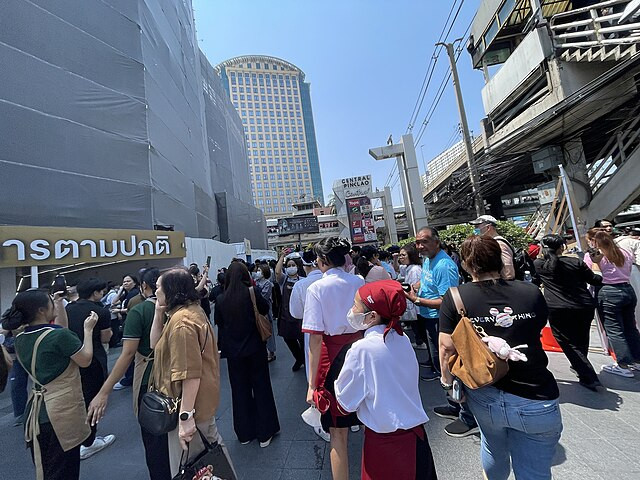A powerful 7.7-magnitude earthquake struck Southeast Asia on Friday, killing more than 150 people across Myanmar and Thailand and collapsing a high-rise building in central Bangkok, officials said. The tremor, among the strongest to hit the region in years, was centered in central Myanmar near Mandalay and was followed by a 6.4-magnitude aftershock, according to the U.S. Geological Survey.
Myanmar's military government reported at least 144 dead and more than 730 injured, with officials warning that the death toll was likely to rise. "The death toll and injuries are expected to rise," said Senior Gen. Min Aung Hlaing during a televised address Friday evening.
The quake struck at a shallow depth of six miles, intensifying the destruction across a 125-mile-long corridor. In Mandalay, Myanmar's second-largest city, video footage posted on social media showed buildings reduced to rubble, debris scattered across streets, and residents sheltering on the tarmac at the city's airport. NPR reported difficulty verifying the authenticity of the footage but confirmed the widespread damage through aid officials.
A state of emergency was declared in six regions of Myanmar, including Naypyidaw, the capital. Relief efforts by organizations such as the Red Cross have been hindered by downed power lines and damaged infrastructure. "The infrastructure just isn't able to deal with something like this," said Chris Eades, regional Asia representative for Church World Service, speaking from Bangkok. "Even before the earthquake happened, things were incredibly difficult," he added, noting internet blackouts and restricted access to minority regions affected by civil conflict.
In Thailand, the earthquake caused panic across the capital. A 33-story high-rise under construction near Bangkok's Chatuchak Market collapsed, sending a cloud of dust into the sky as bystanders screamed and fled. The structure, slated to house Thailand's Office of the Auditor General, was approximately one-third complete but had reached its full height.
In Bangkok's city center, tremors rattled buildings, causing widespread evacuations. "At first, I didn't know what was going on. I felt dizzy, like I wanted to throw up," said Sirichok Saelee, a bank employee on the 21st floor of PS Tower. "Then the building started shaking hard, and I could see the glass windows moving. That's when my colleagues and I looked at each other and realized it was an earthquake. We started running for the stairs."
Water spilled from rooftop pools and debris fell from buildings across the Thai capital, home to over 17 million people. Prime Minister Paetongtarn Shinawatra convened an emergency meeting and declared Bangkok a disaster zone to coordinate aid and interagency response efforts.
Fraser Morton, a tourist from Scotland who was inside a Bangkok mall during the quake, described the chaos: "I just started walking calmly at first but then the building started really moving. Yeah, a lot of screaming, a lot of panic, people running the wrong way down the escalators, lots of banging and crashing inside the mall."
The quake's tremors were also felt in India and China, though no major casualties were reported there. The U.S. Geological Survey and Germany's GFZ center for geosciences recorded the main earthquake at a depth of 6.2 miles, with its epicenter northwest of Sagaing, Myanmar.






